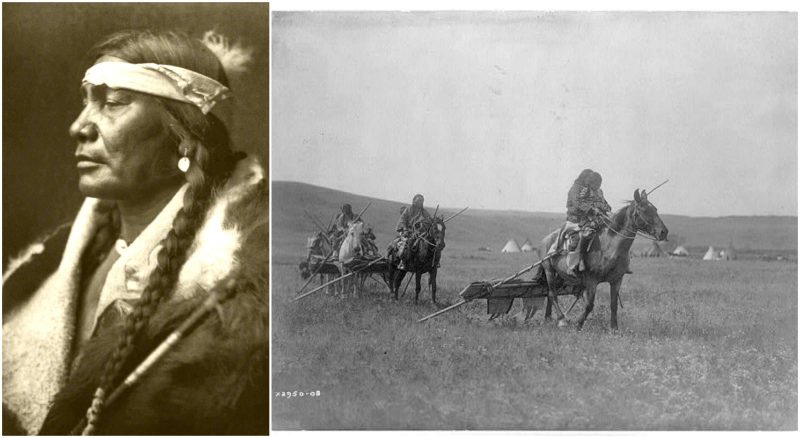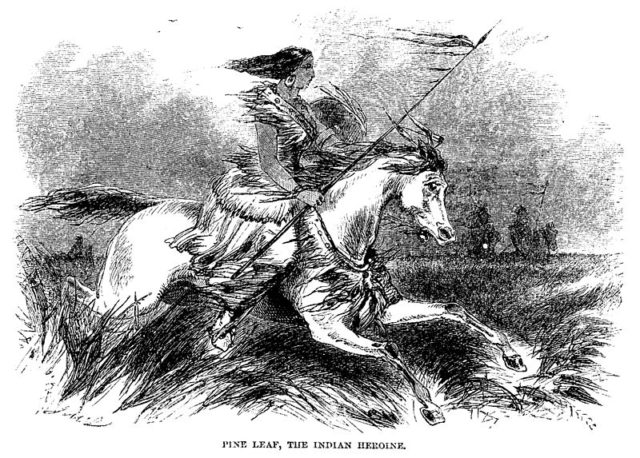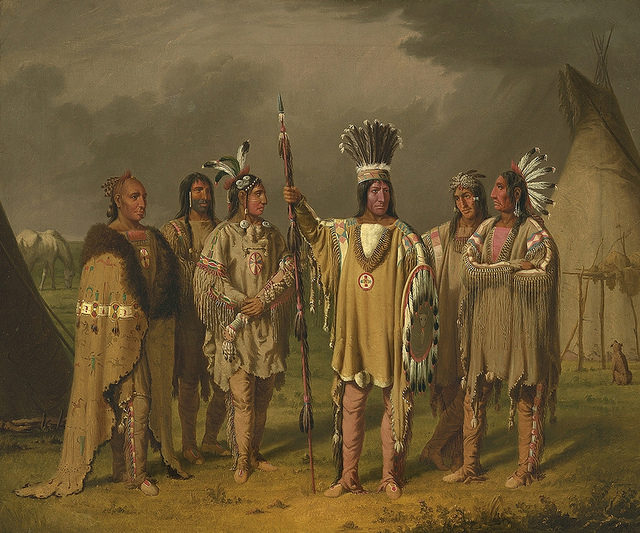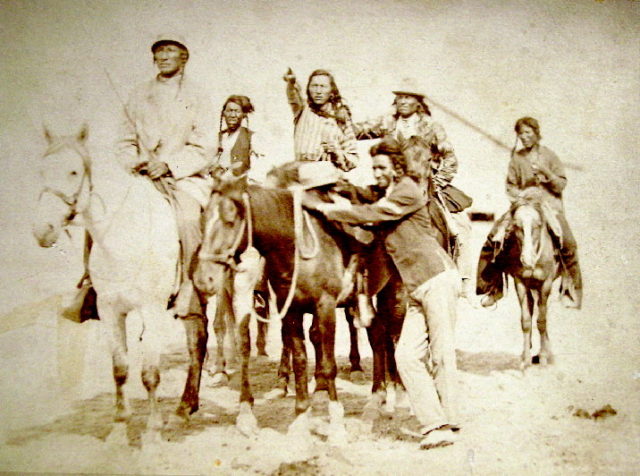Catherine II, often called Catherine the Great, was born on May 2, 1729, in Stettin, Prussia (now Szczecin, Poland), and became the Russian empress in 1762. Under her reign, Russia expanded its territories and modernized, following the lead of Western Europe. She died on November 17, 1796 in Tsarskoye Selo, or what is now Pushkin.
Early Years
Catherine II of Russia, sometimes called Catherine the Great, started out as a minor German princess. Her birth name was Sophie Friederike Auguste, and she grew up in Stettin in a small principality called Anhalt-Zebst. Her father, Christian August, was a prince of this tiny dominion, but he gained more fame for his military career. He served as a general for Frederick William I of Prussia. Princess Johanna Elisabeth of Holstein-Gottorp, Catherine II's mother, had little interest in her daughter. Instead, Johanna spent much of her time and energy on Catherine's younger brother Wilhelm Christian, but the boy died at the age of 12. Catherine on the other hand was nurtured by her governess Babette.
As Catherine grew up, her mother eventually came to see her daughter as a means to move up the social ladder and improve her own situation. Her mother had relatives in other royal courts in the region, and brought Catherine with her on visits to seek out possible suitors. Catherine on the other hand saw marriage as a way to escape from her controlling mother.
Educated by tutors, Catherine had religious studies with a military chaplain, but she questioned much of what he taught her. She also learned three languages: German, French and Russian. The Russian came in handy when Catherine's mother wrangled an invitation to St. Petersburg from the Empress Elizabeth; Elizabeth had once been engaged to Johanna's older brother, who died of smallpox, and she felt a connection to Johanna's family. She wanted to see if Catherine would be suitable for her heir, Grand Duke Peter (later
Peter III).
Becoming Russian Royalty
In 1744, a teenage Catherine traveled with her mother to Russia. She soon fell ill, and her treatment created conflict between her mother and the Russian Empress, Elizabeth. Elizabeth insisted on numerous bloodlettings, while Johanna protested the procedure. When Catherine recovered, she moved forward with her relationship to Grand Duke Peter. The pair became engaged, and Catherine converted to the Russian Orthodox faith, despite her deeply Lutheran father's objections. Along with her new religion, she also received a new name—Yekaterina, or Catherine.
On August 21, 1745, Catherine II married into the Russian royal family, becoming a grand duchess. She and Peter proved to be anything but a happy couple, however. Peter was immature and juvenile, preferring to play with toy soldiers and mistresses than to be with his wife. Catherine II developed her own pastimes, which included reading extensively.
After years of not having children, Catherine II finally produced a heir. Her son, Paul, was born on September 20, 1754. The paternity of the child has been a subject of great debate with many scholars, who believe that Paul's father was actually Sergei Saltykov, a Russian noble and member of the court. Others have claimed that Paul looked a lot like Peter, leading them to believe that he was actually Paul's father. In any case, Catherine had little time with her first-born son; Elizabeth took over raising the child soon after his birth.
Taking the Throne
After Empress Elizabeth's death in December 25, 1761, Catherine's husband assumed the throne, becoming Peter III, while she received the title of Empress Consort. The pair were leading separate lives at this point, and she had little to do with his rule. Peter was openly cruel to his wife, and often discussed pushing her aside to allow his mistress to rule with him. He soon alienated other nobles, officials and the military with his staunch support for Prussia. A purveyor of what would be seen today as progressive domestic reforms, he also angered the Orthodox Church by taking away their lands. After six months, Peter was overthrown in a coup orchestrated by Catherine.
Catherine II had conspired with her lover, Gregory Orlov, a Russian lieutenant, along with several others in order to unseat Peter. She was able to get him to step down from power, and assumed control herself. A few days after Peter's resignation, he was strangled while in the care of her co-conspirators at Ropsha, one of Peter's estates. The exact role Catherine played in her husband's death is unclear.
Concerned about being toppled by opposing forces herself, Catherine sought to appease the military and the church. She recalled troops that had been sent by Peter to fight Denmark, and promoted and gifted those who had backed her as the new empress. Early in her reign, she returned the church's land and property. Catherine even styled herself after the beloved ruler
Peter the Great, claiming that she was following in his footsteps. Catherine II had a sculpture made later, known as the Bronze Horseman, built to honor him.
Ruling Russia
While Catherine believed in absolute rule, she did make some efforts toward social and political reforms. She put together on document, known as the "Nakaz," on how the country's legal system should run, with a push for capital punishment and torture to be outlawed and calling for every man to be declared equal. Catherine had also sought to address the dire situation of country's serfs, workers who were owned by landowners for life. The Senate protested any suggestion of changing the feudal system.
After finalizing the Nakaz, Catherine brought delegates together from different social and economic classes to form the Legislative Commission, which met for the first time in 1767. No laws came out of the commission, but it was the first time that Russians from across the empire had been able to express their thoughts about the country's needs and problems. Ultimately, the Nakaz became more known for its ideas rather than its immediate influence.
Later in her rule, with the Charter of the Nobility in 1785, Catherine made an about-face on policy and greatly augmented upper-class power, with a large amount of citizens forced into the oppressive conditions of serfdom.
A religious skeptic, Catherine sought to contain the power of the Orthodox Church. She had given them their land and property back initially, but she soon changed her mind. The wealth of the church should belong to the state, Catherine thought. To that end, she made the church part of the state and all of its holdings, including more than one million serfs, became state property and subject to taxes.
Foreign Affairs
During Catherine's reign, Russia expanded its borders. She made substantial gains in Poland, where she had earlier installed her former lover, Polish count Stanislaw Poniatowski, on the country's throne. Russia's main dispute with Poland was over the treatment of many Orthodox Russians who lived in the eastern part of the country. In a 1772 treaty, Catherine gave parts of Poland to Prussia and Austria, while taking the eastern region herself.
Russia's actions in Poland triggered a military conflict with Turkey. Enjoying numerous victories in 1769 and 1770, Catherine showed the world that Russia was a mighty power. She reached a peace treaty with the Ottoman Empire in 1774, which brought new lands into the empire and gave Russia a foothold in the Black Sea. One of the war's heroes, Gregory Potemkin, became a trusted advisor and lover of Catherine's.
Potemkin proved to be a great supporter of Catherine and an accomplished statesman in his own right. Ruling over newly gained territories in southern Russia in her name, he started new towns and cities, and built up the country's navy there. Potemkin also encouraged Catherine to take over the Crimea peninsula in 1783, shoring up Russia's position in the Black Sea. A few years later, Catherine once again clashed with the Ottoman Empire. The two countries battled each other from 1787 to 1792.
Education and the Arts
At the time of Catherine's accession, Russia was viewed as backward and provincial by many in Europe. She sought to change this negative opinion through expanding educational opportunities and the arts. Catherine had a boarding school established for girls from noble families in St. Petersburg, and later called for free schools to be created in towns across Russia.
Catherine was devoted to the arts, and sponsored many cultural projects. In St. Petersburg, she had a theater built for opera and ballet performances—and even wrote a few librettos herself. She also became a prominent art collector, and many of these were displayed in the Hermitage in a royal residence in St. Petersburg.
An avid reader, Catherine was especially fond of the philosophers and writers of the Enlightenment. She exchanged letters with the French writer
Voltaire, and writer Denis Diderot came to Russia to visit with her. In fact, Diderot was the one who gave Cathering her nickname, "Catherine the Great." With literary aspirations of her own, Catherine also wrote about her life in a collection of memoirs.
Romantic Life
The love life of Catherine II has been a topic of much speculation and misinformation. The rumors of bestiality have been debunked, but the royal did have numerous relationships during her reign. Catherine could not remarry, as it would jeopardize her position, and she had to appear chaste to the public. Behind the scenes, however, she seemed to have quite the sexual appetite.
According to most accounts, Catherine had around 12 lovers during her life. She had a system for managing her affairs—often bestowing gifts, honors and titles on those she liked, in order to win their favor. At each relationship's end, Catherine usually found a way to get her new paramour out of her hair. Gregory Potemkin, perhaps her most significant lover, spent many years as her favorite, and remained lifelong friends after their passions cooled.
In addition to her son Paul, who may or may not have been Peter III's son, Catherine had three other children.
Final Days
By 1796, Catherine had enjoyed several decades as Russia's absolute ruler. She had a strained relationship with her son and heir, Paul, over her tight grip on power, but she enjoyed her grandchildren, especially the oldest one: Alexander. In her later years, Catherine continued to possess an active mind and a strong spirit. In mid-November of 1796, however, she was found unconscious on the floor of her bathroom. It was thought at the time that she suffered a stroke.
Catherine, Russia's great empress, lingered on until the following night, but never regained consciousness. She died on November 17, 1796. At the Winter Palace, her coffin lay in state next to that of her late husband, Peter III. Her son, Paul, ordered the remains of his father to placed there, giving Peter III the funeral honors that he had not received after his assassination. Catherine II and Peter III were both laid to rest at the Cathedral of St. Peter and St. Paul.
Catherine is often better remembered for her romantic liaisons than her many accomplishments. Historians have also criticized her for not improving the lives of serfs, who were the majority of the Russian population. Still, Catherine made some significant contributions to Russia, bringing forth educational reforms and championing the arts. As leader, Catherine also extended the country's borders through military might and diplomatic prowess.
Read more and watch videos
here
















